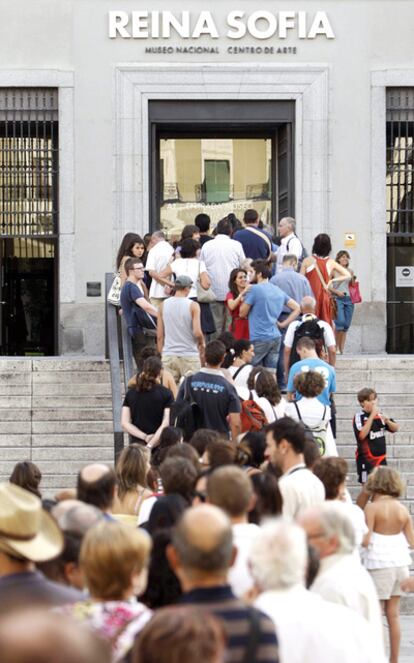Why Spain's cultural venues have missed the social media boat
New report says museum connectivity is sadly lacking
Spanish museums are in a state of crisis in terms of their management models, and their future looms uncertain. In the last few months, many art centers have begun programming joint exhibitions, or even merging their collections in a bid to join forces and reduce costs.
But the fact is that most Spanish museums and art centers show precious little interest for each other's activities, and work with their backs to one another. That is one of the conclusions in a new study released by Dosdoce, a website that monitors the use of new technologies by the cultural sector.
The report, Analysis of museums and art centers' social network connectivity, assesses the way 50 art institutions use online social resources, especially Facebook and Twitter.
After confirming the overwhelming presence of museums in online social networks (compared with 2007, when their presence was minimal), a research team led by Javier Celaya found that although leaders and communications managers at museums are increasingly aware of the participatory power of what is popularly termed Web 2.0, they do not make adequate use of it.
"They're unclear about their strategy and what they want to do with these tools; they're just there for the sake of being there," said the report. Most centers are too "corporate" both in tone and in content, and Celaya recommends a renewed effort by communications teams to prevent their comments from sounding like a mere "cut and paste" of information already available on the official museum websites.
According to Celaya, museums and art centers, "whose activity represents four percent of Spanish GDP, act like small islands in the cultural world." The report holds that museums barely interact with their online fans and followers, which is a pillar of social networking. They never ask where visitors' interests lie and what they expect, and furthermore, if and when followers ask any questions, these remain unanswered in a majority of cases.
"One of the most surprising findings is that museums do no follow up on their online visitors. That makes it impossible to know what the latter expect from them," said Celaya.
The art centers with the most online "friends," both on Facebook and Twitter, are the Reina Sofía contemporary art museum, La Casa Encendida and Caixaforum, all three based in Madrid, followed by the Picasso Museum and the CCCB in Barcelona.
The report's creators charted connections and information flows, the number of daily posts, event creations, comments and daily tweets at the art centers during the research period. Madrid showed up as the city with the greatest Facebook activity, whereas the Spanish capital and Barcelona share the top spot for Twitter. This, says Celaya, is due to the fact that Madrid centers "use networks as a tool for outreach, leisure and entertainment, whereas Barcelona centers do so as a tool to find information."

Tu suscripción se está usando en otro dispositivo
¿Quieres añadir otro usuario a tu suscripción?
Si continúas leyendo en este dispositivo, no se podrá leer en el otro.
FlechaTu suscripción se está usando en otro dispositivo y solo puedes acceder a EL PAÍS desde un dispositivo a la vez.
Si quieres compartir tu cuenta, cambia tu suscripción a la modalidad Premium, así podrás añadir otro usuario. Cada uno accederá con su propia cuenta de email, lo que os permitirá personalizar vuestra experiencia en EL PAÍS.
¿Tienes una suscripción de empresa? Accede aquí para contratar más cuentas.
En el caso de no saber quién está usando tu cuenta, te recomendamos cambiar tu contraseña aquí.
Si decides continuar compartiendo tu cuenta, este mensaje se mostrará en tu dispositivo y en el de la otra persona que está usando tu cuenta de forma indefinida, afectando a tu experiencia de lectura. Puedes consultar aquí los términos y condiciones de la suscripción digital.
Últimas noticias
Most viewed
- Pablo Escobar’s hippos: A serious environmental problem, 40 years on
- Reinhard Genzel, Nobel laureate in physics: ‘One-minute videos will never give you the truth’
- Why we lost the habit of sleeping in two segments and how that changed our sense of time
- Charles Dubouloz, mountaineering star, retires at 36 with a farewell tour inspired by Walter Bonatti
- The Florida Keys tourist paradise is besieged by immigration agents: ‘We’ve never seen anything like this’








































